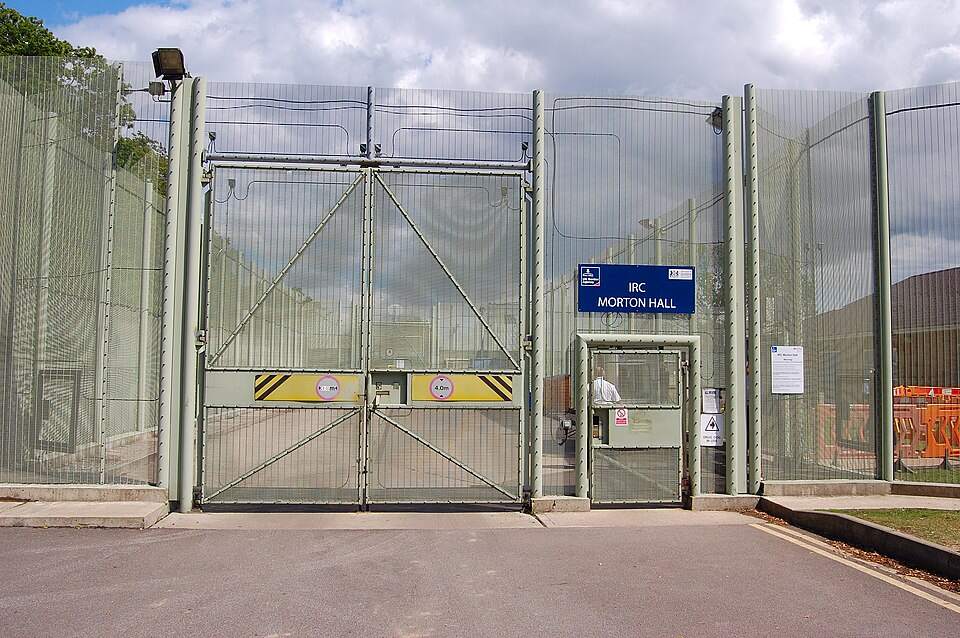Key safeguards remain ineffective at Gatwick-based IRC despite improvements since last year’s critical inspection
His Majesty's Inspectorate of Prisons (HMI Prisons) this week published a report on an independent review of progress at Brook House immigration removal centre (IRC) located in the grounds of Gatwick Airport.
 You can download the 24-page report here.
You can download the 24-page report here.
Brook House, which is run by Serco on behalf of the Home Office, held 192 detainees at the time of the latest review visit, compared to 327 during the last full inspection by HMI Prisons in August 2024. In its 2024 report, HMI Prisons expressed concern over a substantial rise in violence and self-harm at the overcrowded and prison-like IRC.
In its new report, HMI Prisons finds that while much remains to be done by Serco and the Home Office to improve the IRC, there has been "commendable progress" since last year's inspection.
Inspectors found that staffing levels and capability had been strengthened, with lower attrition rates and more visible frontline management. Detainees spoke positively about the way they were treated by staff, and inspectors saw "mature and effective" handling of tense situations.
The physical environment had also been upgraded, with units closed on a rolling basis for refurbishment, and a significantly improved library described as a "relaxed and welcoming space". However, the report noted: "The centre continued to look and feel like a prison and detainees remained frustrated with the inadequate ventilation of cells and their inability to open the sealed windows."
Healthcare services, while still facing challenges, showed improvements in culture and service provision. Welfare and reception services were reported to be better resourced, and education provision had seen increased attendance. Progress was also noted in tackling illicit drugs, supported by new detection technology and closer cooperation with police.
Despite the progress, HMI Prisons highlighted several continuing concerns. The watchdog said there had been "limited progress" in support for vulnerable detainees. Vulnerability levels had risen, with 42% of detainees assessed at higher risk compared with 25% the year before. Inspectors said the Home Office did not always identify or properly consider vulnerabilities before deciding to detain individuals, citing cases where serious mental health conditions were overlooked. Safeguards under Rule 35, which are intended to protect those at risk of harm, were not functioning effectively.
The report states: "It could take up to three weeks to schedule a Rule 35 appointment, which was far too long. There was an almost routine failure to submit Rule 35 reports when detainees were suspected of being suicidal. Only three such reports had been submitted in the previous six months; during the same period, 28 detainees had been placed on constant watch because of concerns about imminent self-harm. In one case, health care failed to submit a report for someone who had attempted suicide."
Despite recent training for medical staff, most Rule 35(3) reports relating to torture were described by inspectors as poor, often lacking detail, comprehensive medical assessments, or consideration of how continued detention might affect a detainee's health. In contrast, Rule 35(1) reports concerning the impact of detention on health were generally of better quality and had contributed to more informed Home Office decision-making. While responses from caseworkers were usually timely, inspectors found they did not always reflect an appropriate assessment of risk. In two cases, individuals were not classified at the highest level of risk despite doctors warning that their mental health was likely to deteriorate if they remained in detention.
The handling of detainees' immigration and asylum cases was often too slow, with the report noting: "There was poor case progression in most cases in our sample and one detainee waited five months for a decision on his asylum claim. In some cases, there had been little or no case progression when detainees were held in prison, which prolonged their subsequent detention under immigration powers. There were some long delays in documenting detainees and in the provision of release accommodation for those for whom bail had been agreed."
HMI Prisons also found that too many detainees were still being held for "excessive periods," with some detained for over a year. While the average cumulative length of detention had slightly reduced to 69 days, inspectors said it remained high. A higher proportion of detainees were also now held for over two months (67% compared to 46% at the previous inspection). The longest length of detention was over 550 days.
Inspectors found continuing problems with detainees being released from Brook House without accommodation. In the past year, 10 people had been released homeless, including three assessed as adults at risk. While the centre had improved its data collection and was more confident that cases were being recorded accurately, a shortage of suitable housing remained a serious issue. Multidisciplinary meetings, intended to coordinate extra support for vulnerable detainees, were inconsistent and in some cases did not take place at all. Engagement with charities was described as "very limited," with local welfare groups not always informed when support was needed. Although communication between detention teams and welfare services had improved, HMI Prisons concluded that overall progress on preventing homelessness after release was insufficient.
The review found there had been reasonable progress on personal safety at Brook House since the last inspection. While the report noted that levels of violence were still high, force was used less often and detainees spoken to by HMI Prisons reported feeling safe at the centre.